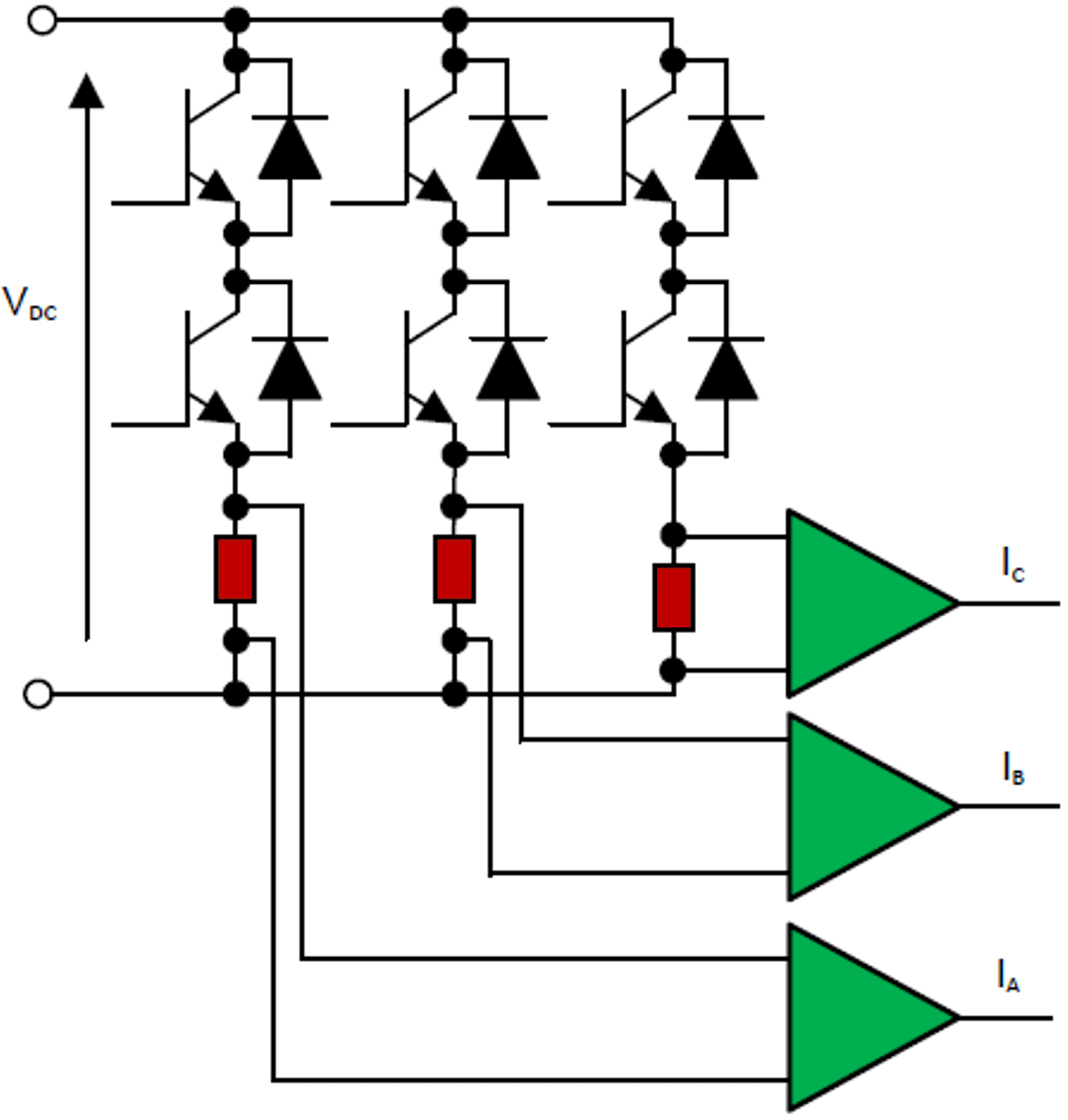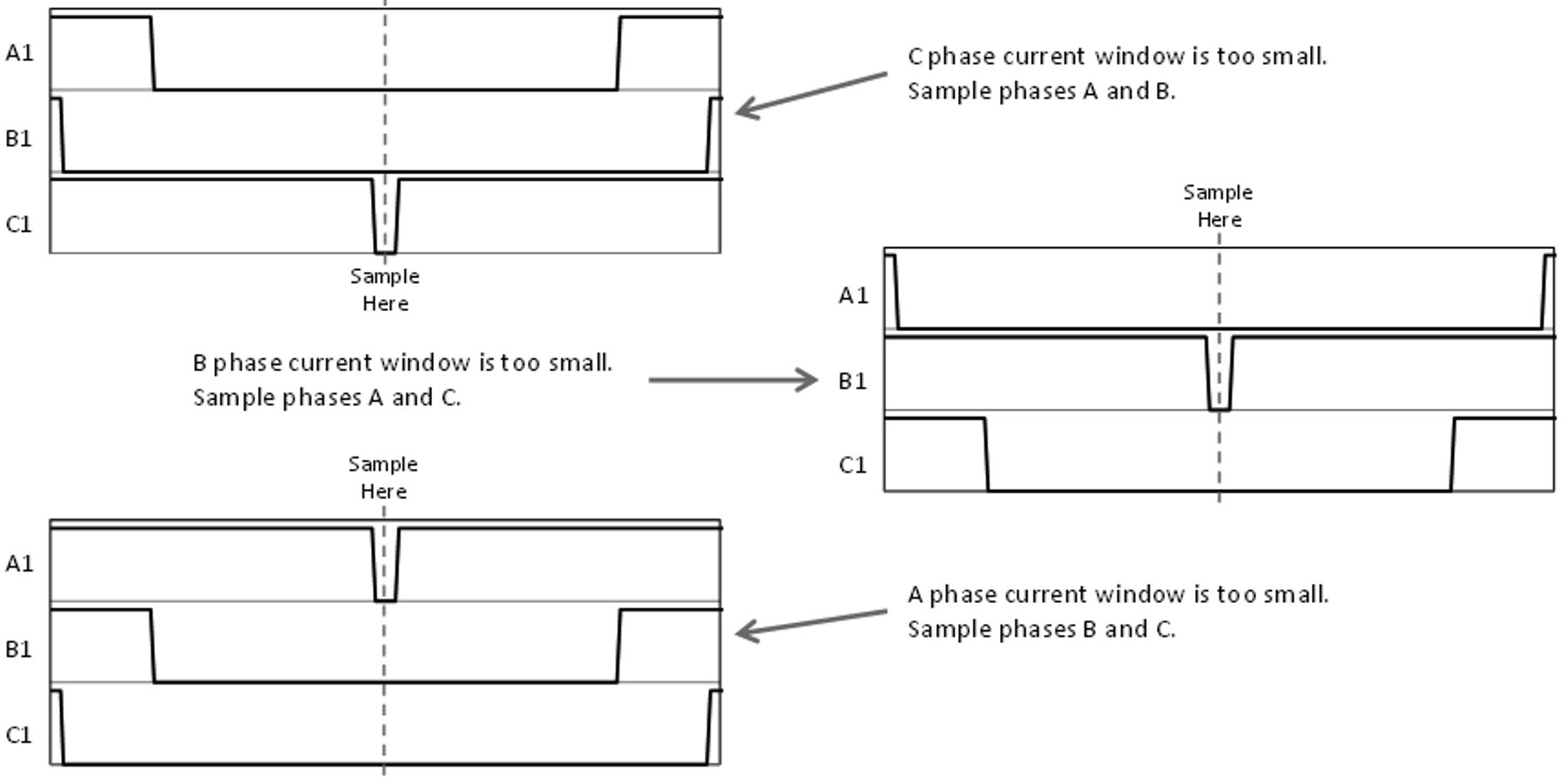SPRACT7 August 2020 TMS320F280021 , TMS320F280021-Q1 , TMS320F280023 , TMS320F280023-Q1 , TMS320F280023C , TMS320F280025 , TMS320F280025-Q1 , TMS320F280025C , TMS320F280025C-Q1 , TMS320F280040-Q1 , TMS320F280040C-Q1 , TMS320F280041 , TMS320F280041-Q1 , TMS320F280041C , TMS320F280041C-Q1 , TMS320F280045 , TMS320F280048-Q1 , TMS320F280048C-Q1 , TMS320F280049 , TMS320F280049-Q1 , TMS320F280049C , TMS320F280049C-Q1
2.2.1.1 Three-Shunt Current Sensing
Figure 2-3 shows three-shunt inverter leg current sensing. Three-shunt current sensing has some advantages. Contrary to the three-shunt technique, the use of single- or two-shunt circuit proves difficult to achieve over-modulation. Additionally, the use of a low-bandwidth op amp is sufficient for current sensing. The three shunt technique can bounce sampling between current signals, selecting two out of three phases each period, which allows for long times for the current signals to settle. If large current measurement windows are possible, then much slower and cheaper op-amps can be used. For example, Figure 2-3 shows three PWM switching signals and what shunt resistor will be sampled. As Figure 2-4 shows, the current signal has plenty of time to stabilize.
 Figure 2-3 Three-Shunt Current Measurement
Circuit With Inverter
Figure 2-3 Three-Shunt Current Measurement
Circuit With Inverter Figure 2-4 Using Three-Shunt Current Sampling
Technique
Figure 2-4 Using Three-Shunt Current Sampling
Technique